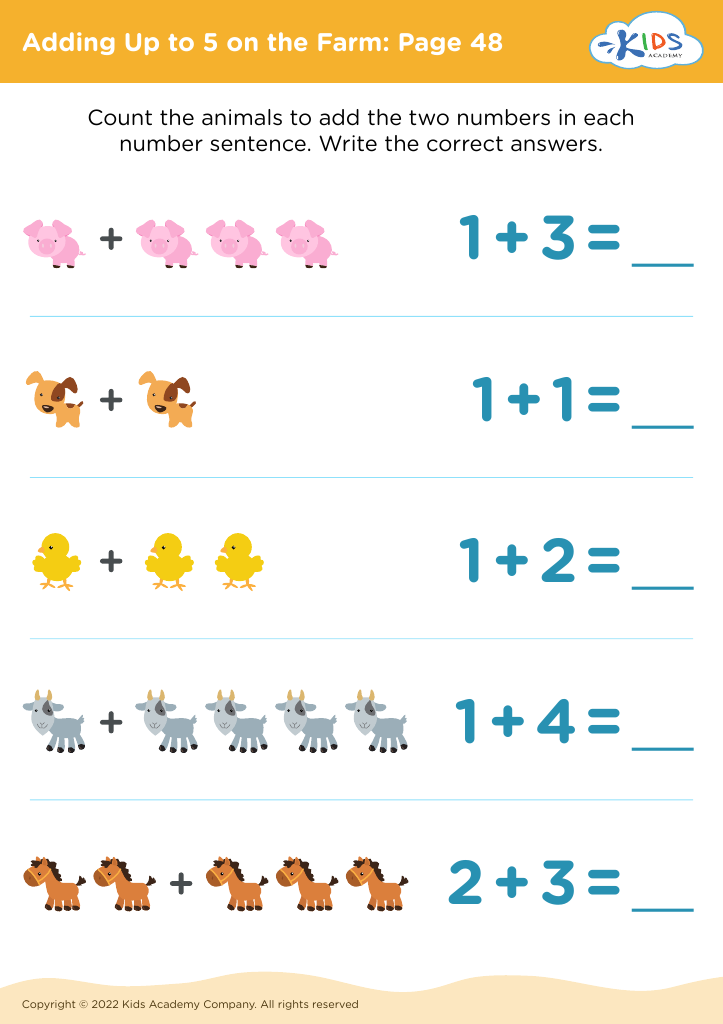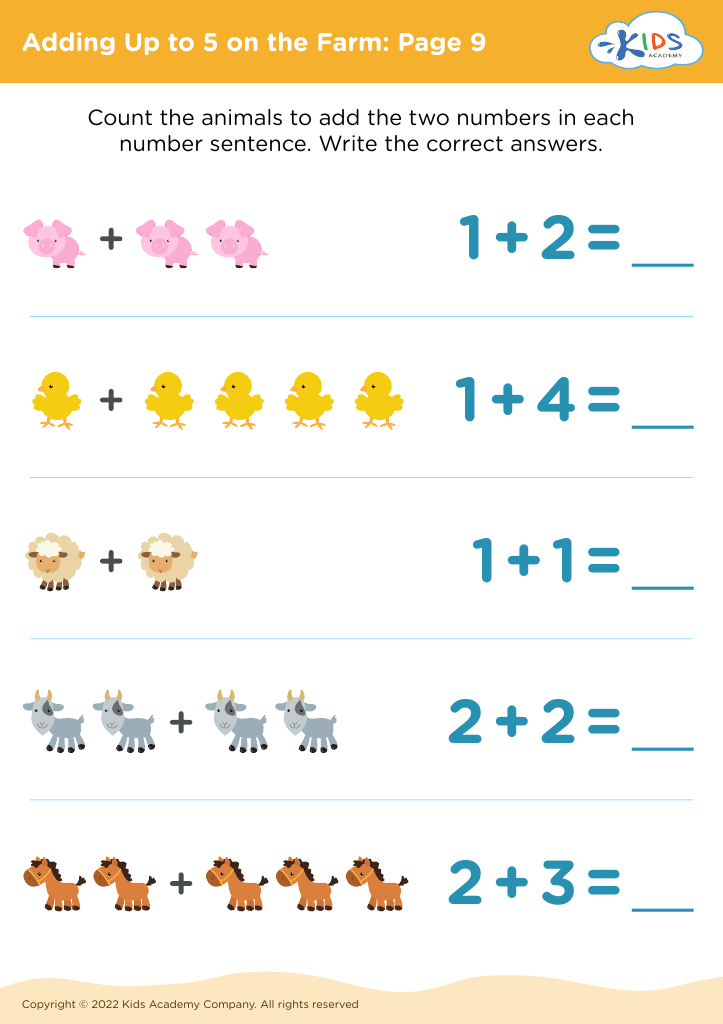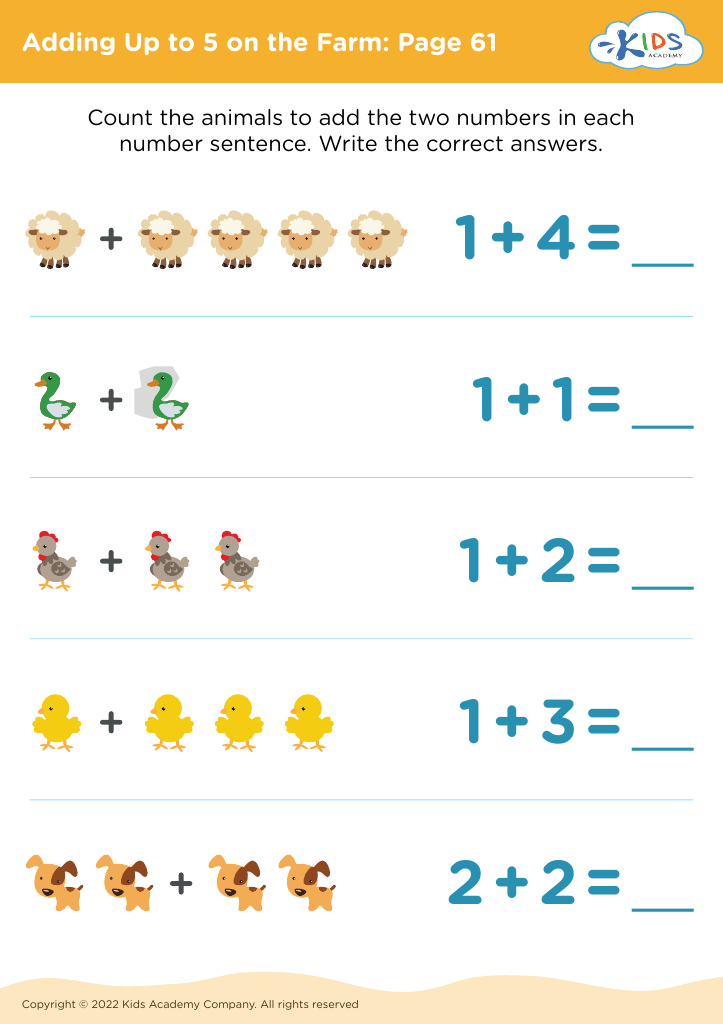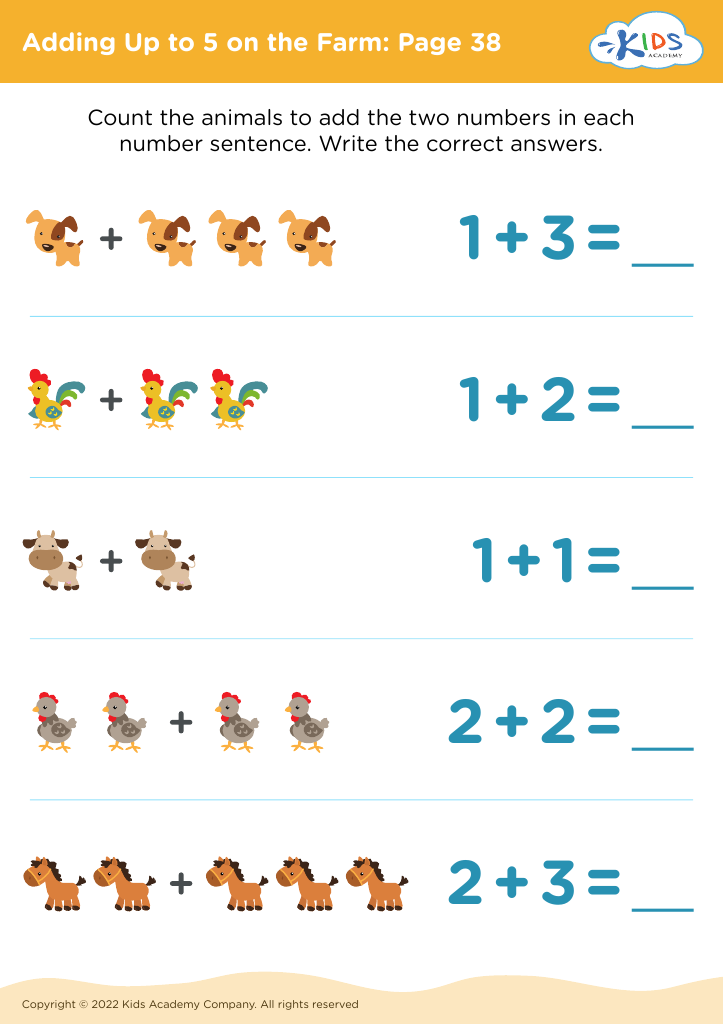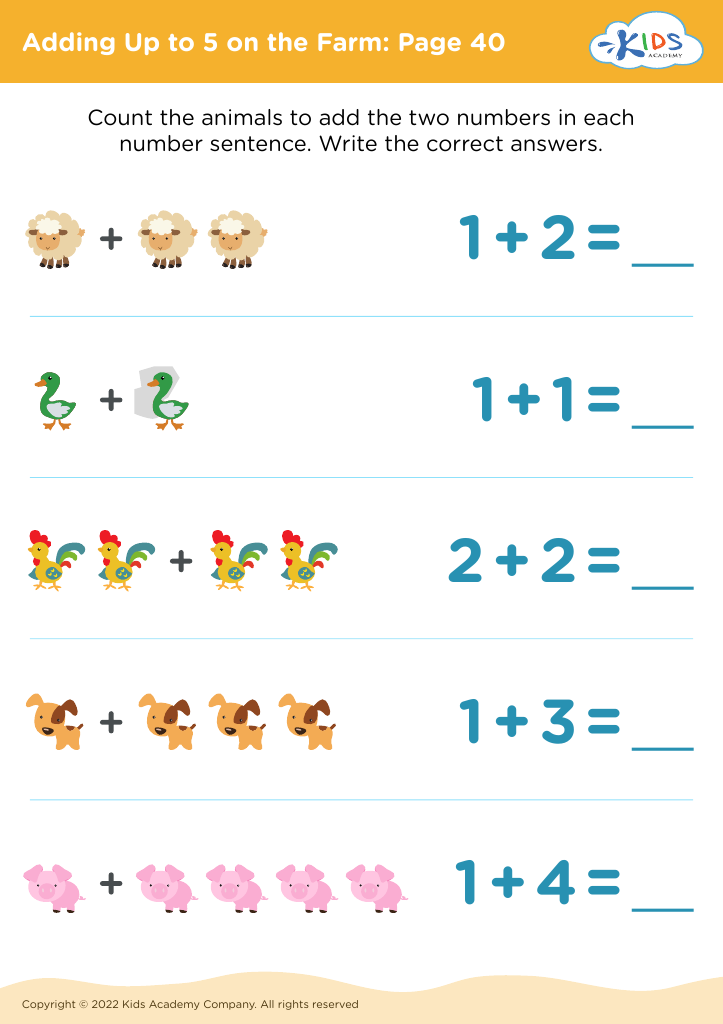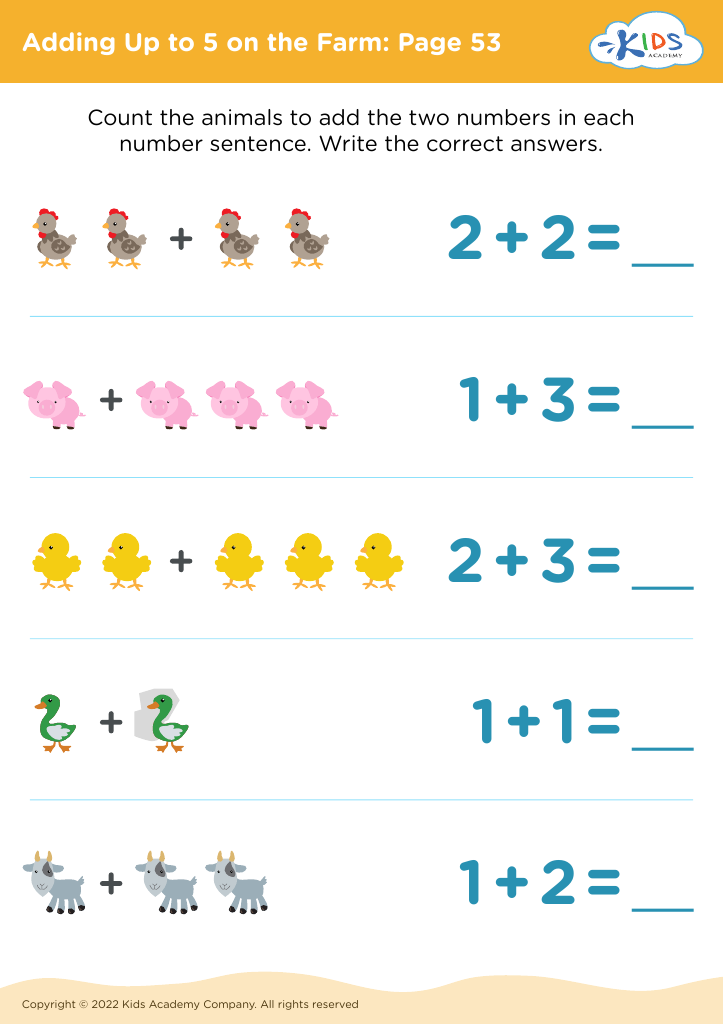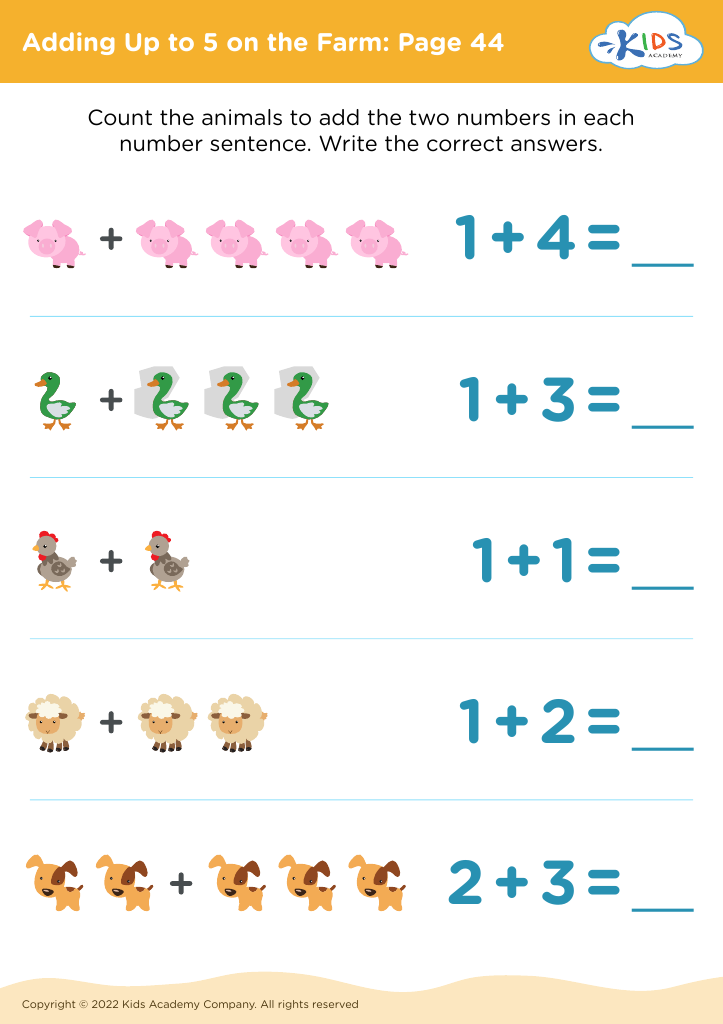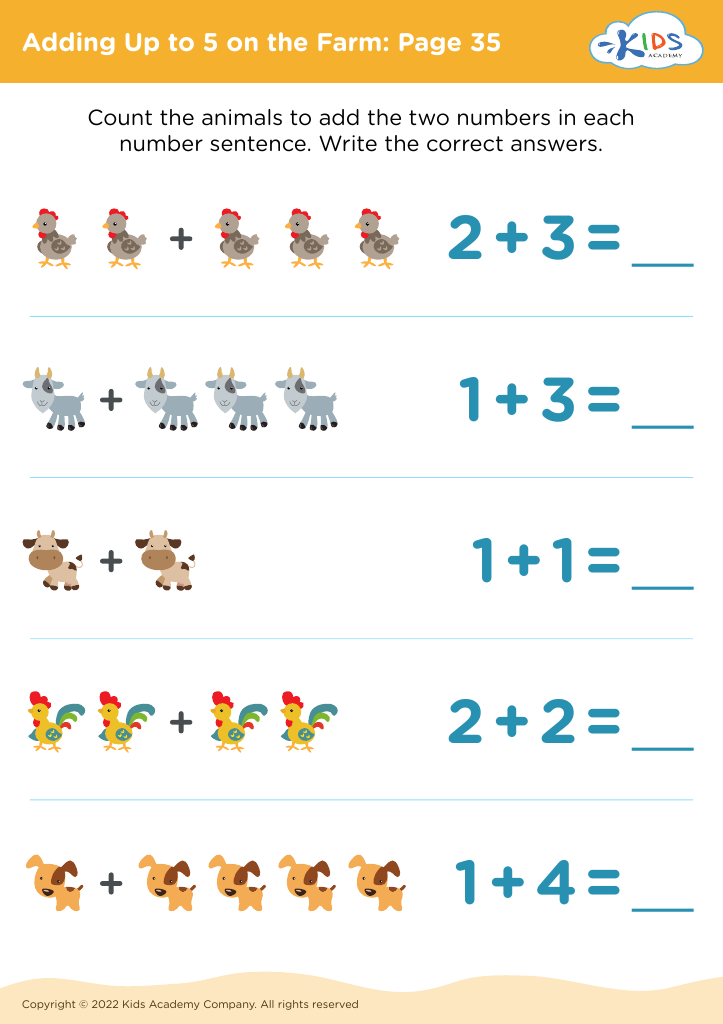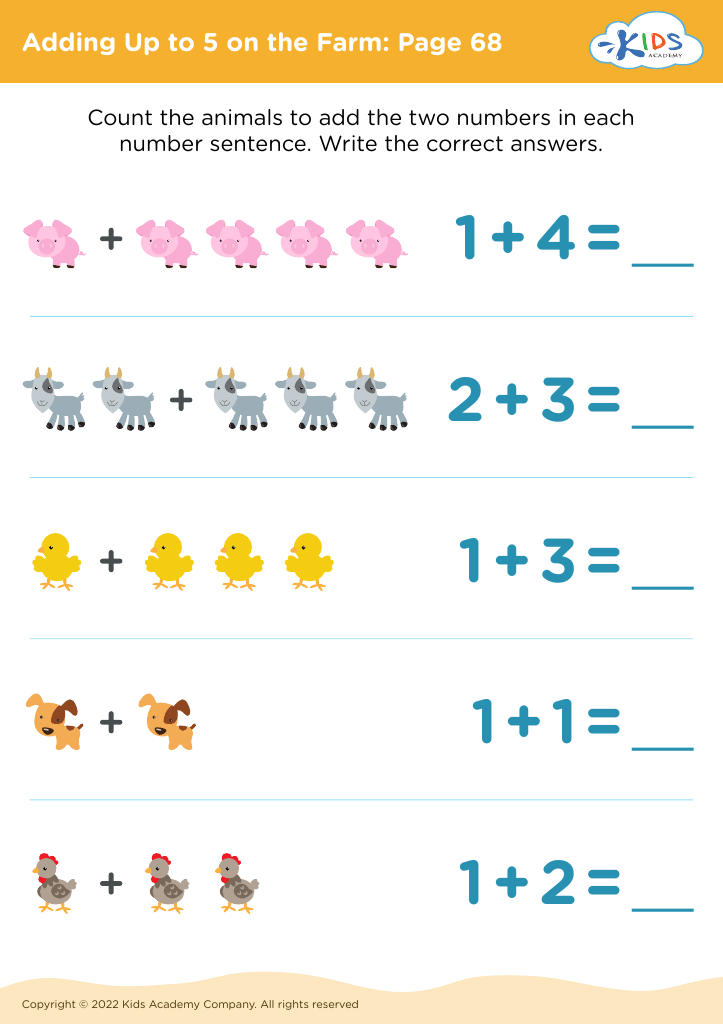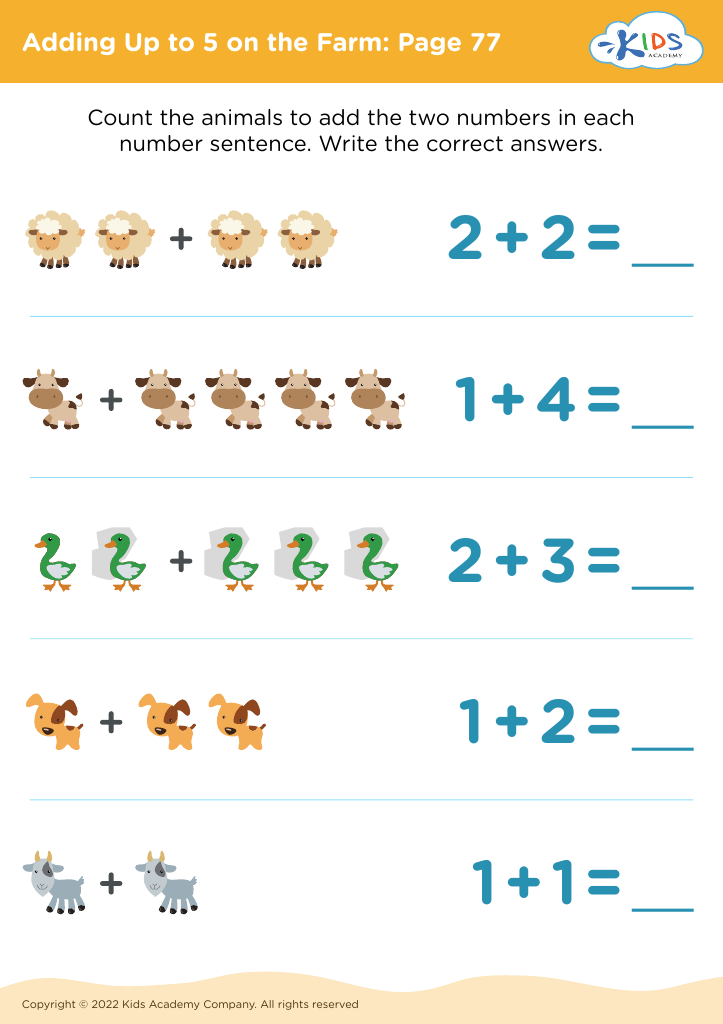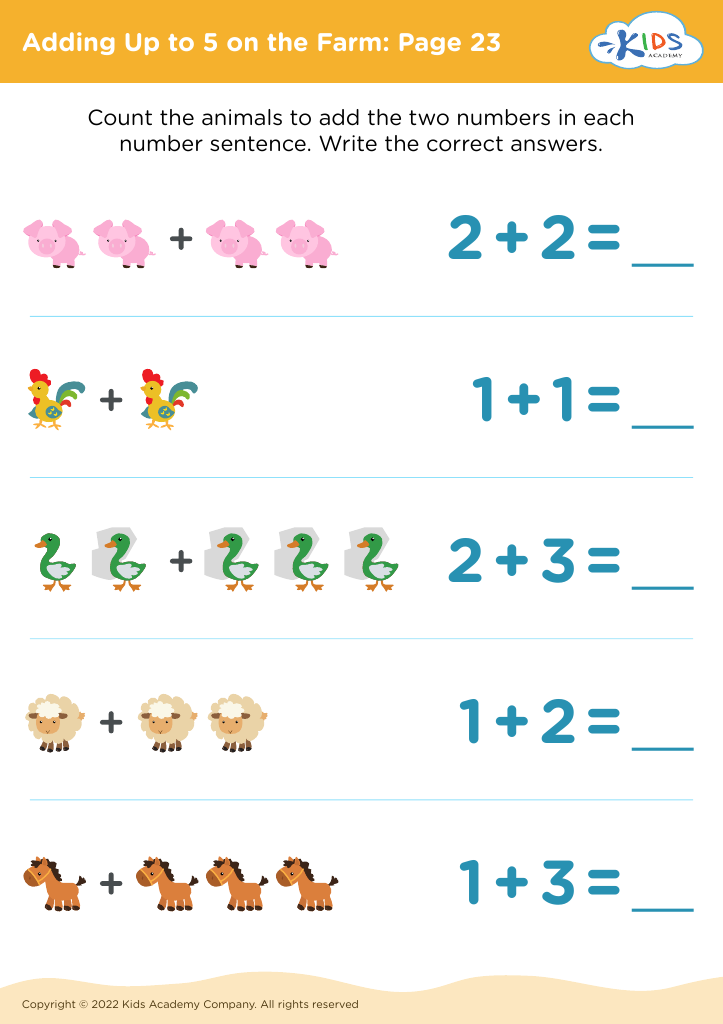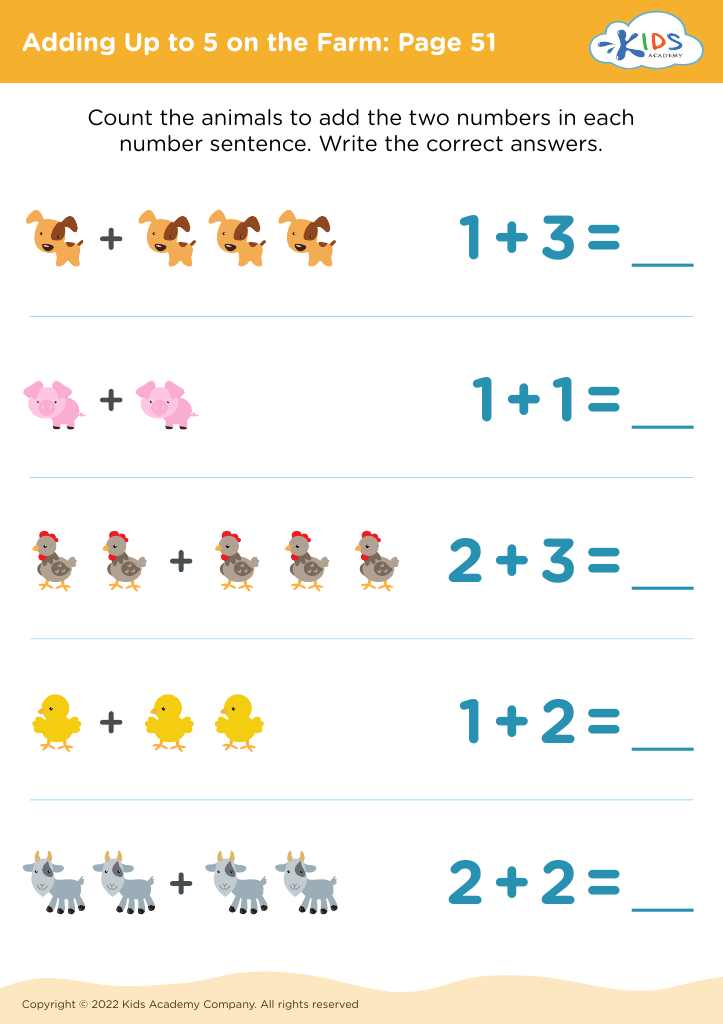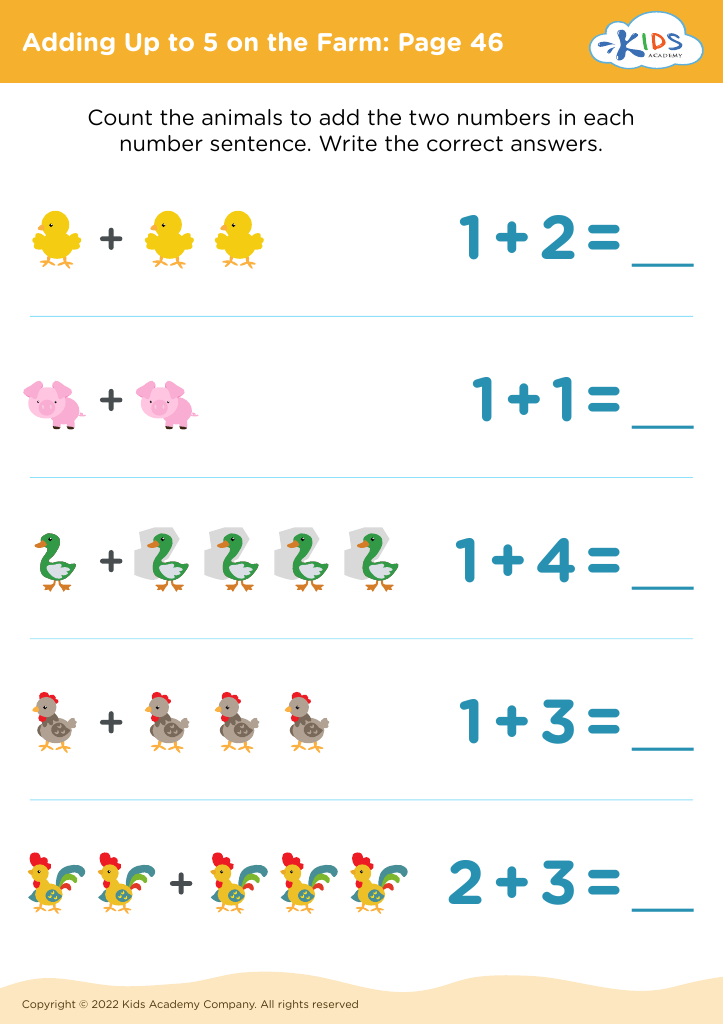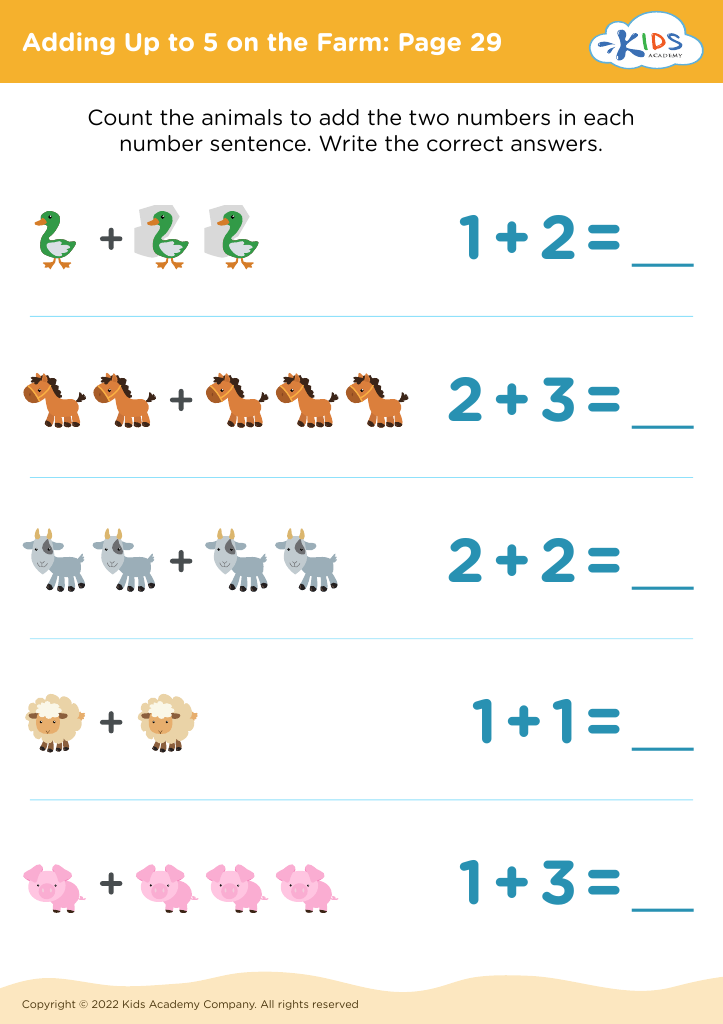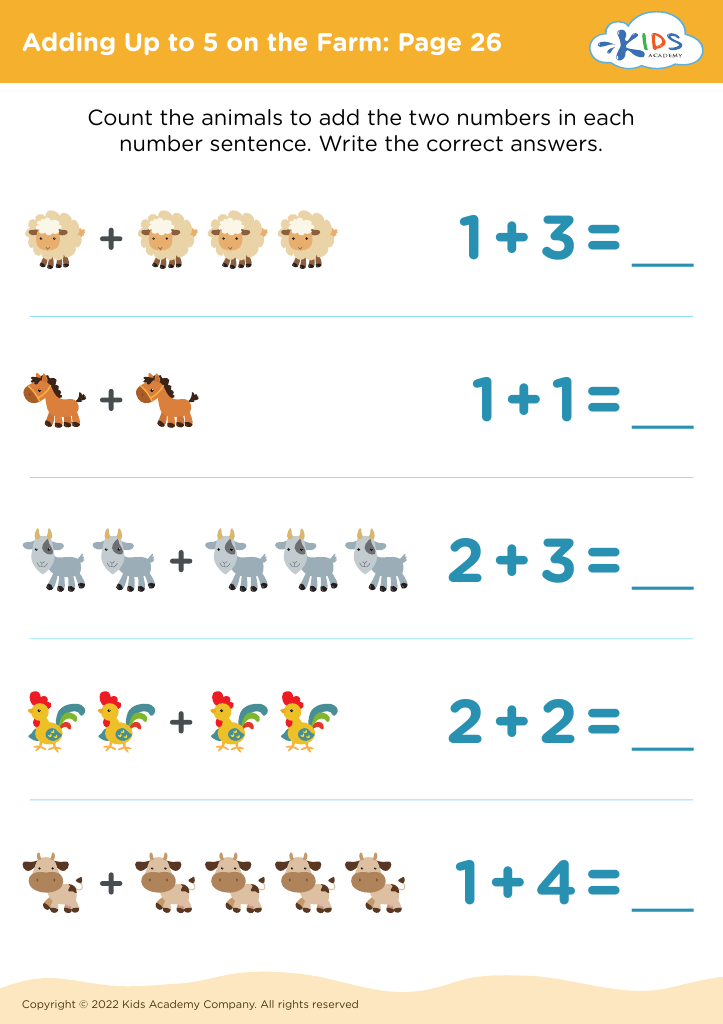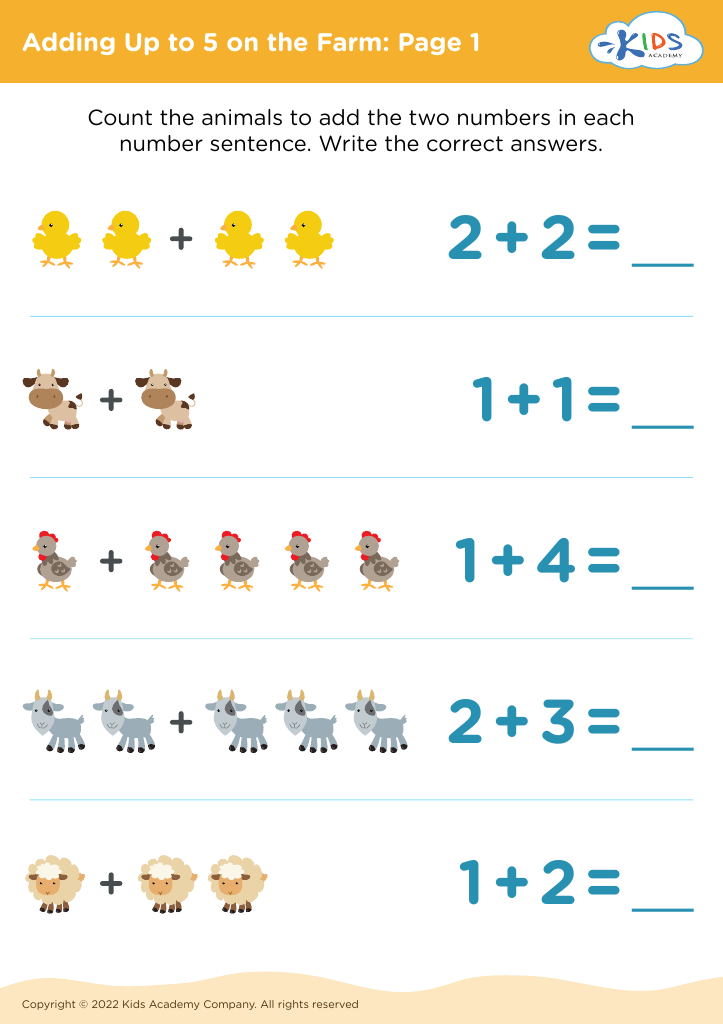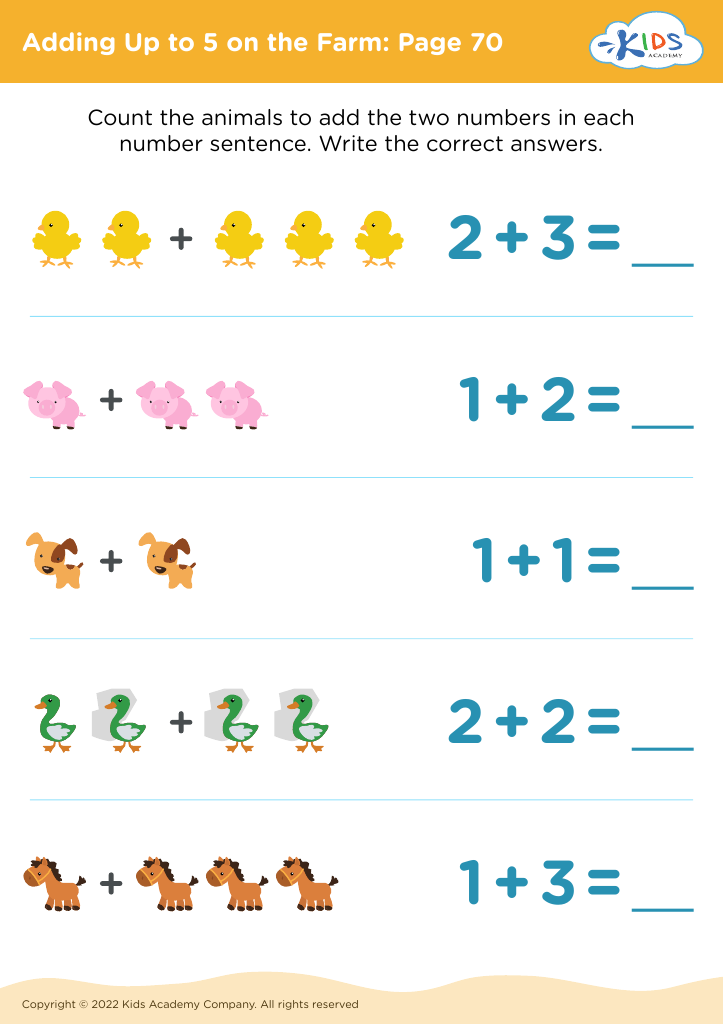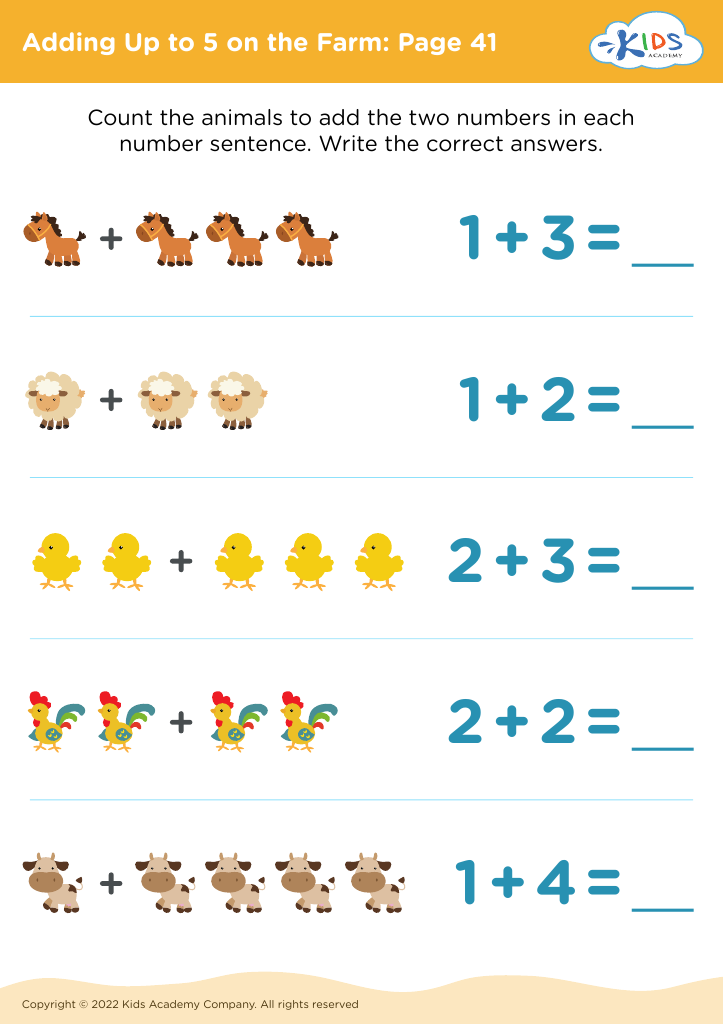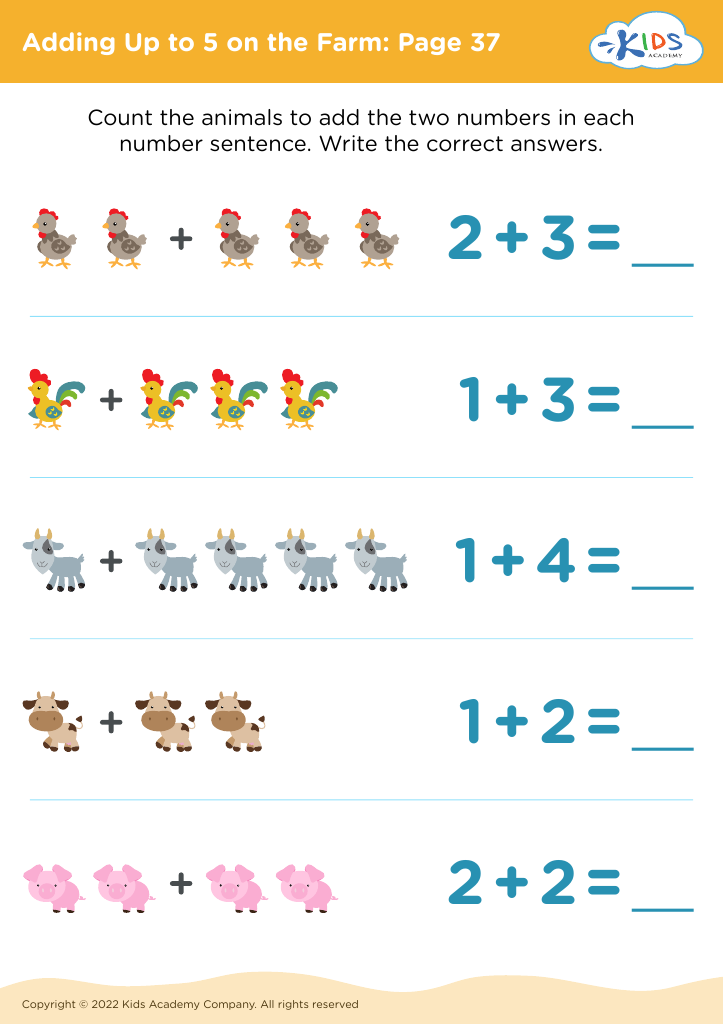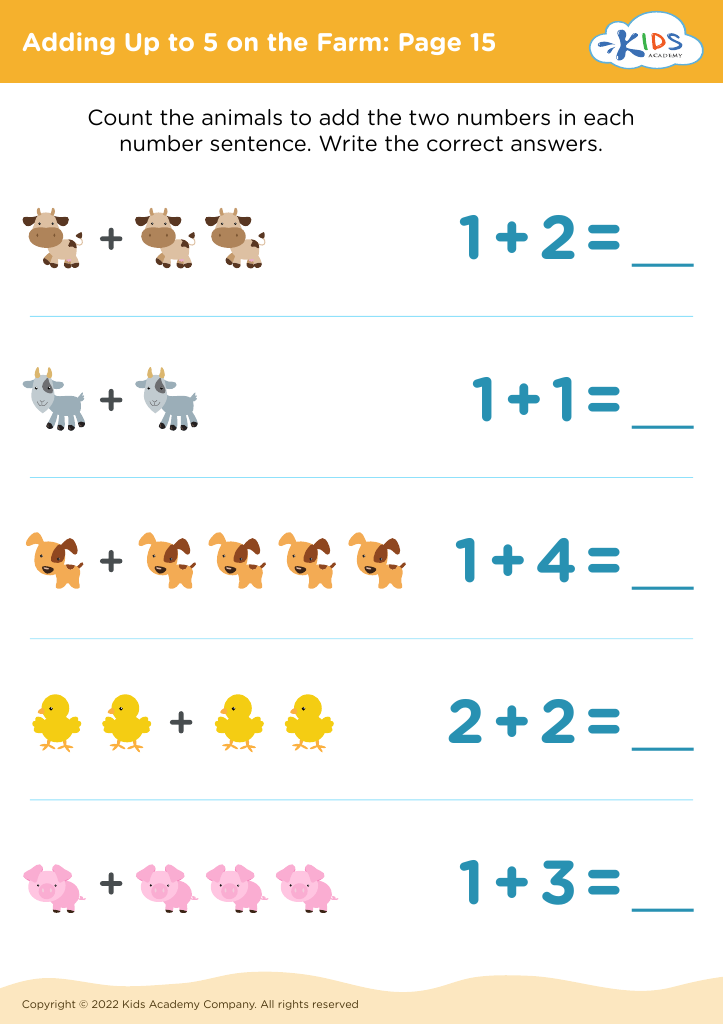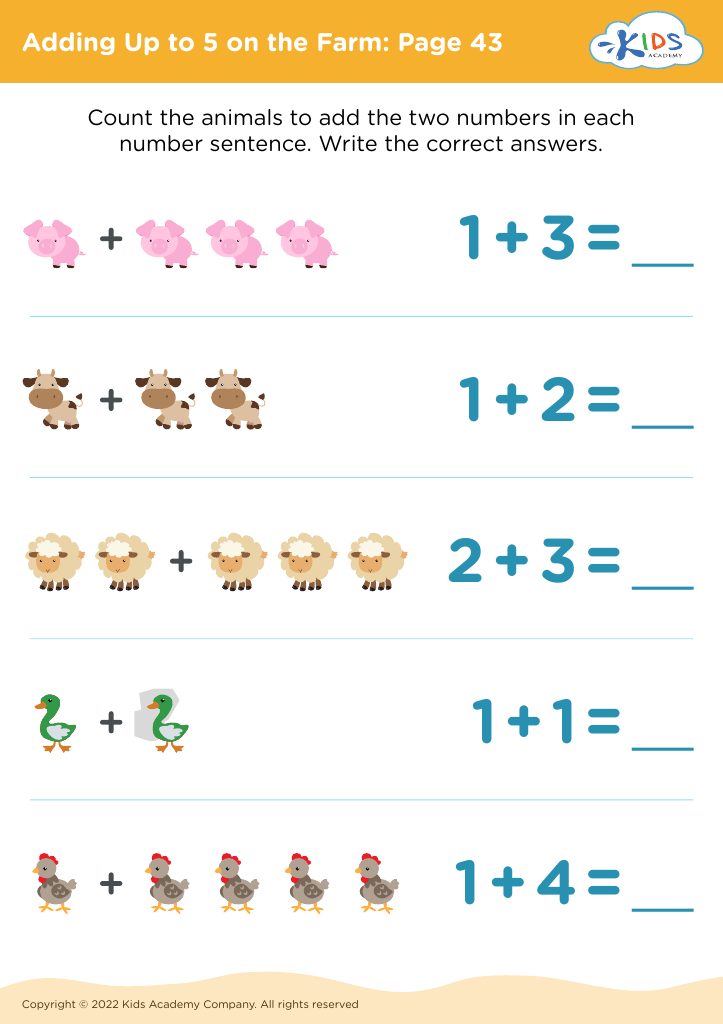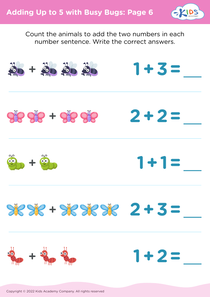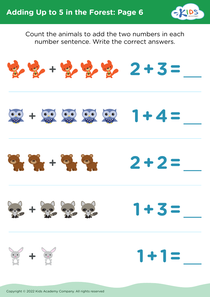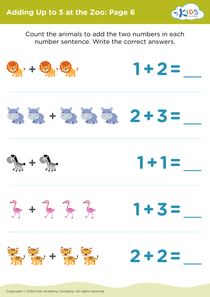Animal recognition Adding on the Farm Worksheets for Ages 4-8
31 filtered results
-
From - To
Discover our engaging "Animal Recognition Adding on the Farm Worksheets" designed specifically for children aged 4-8! These worksheets combine the excitement of animal themes with essential math skills, helping young learners practice addition in a fun, interactive way. Kids will identify farm animals while solving addition problems, reinforcing their understanding of numbers and improving their recognition skills simultaneously. Perfect for homeschooling or classroom use, our resources encourage hands-on learning and creativity. Watch your child build confidence in math as they connect vibrant illustrations of familiar animals with essential arithmetic concepts. Start their educational journey with these delightful worksheets today!
Animal recognition is an essential skill for young children, especially in a farm setting, as it fosters cognitive, social, and emotional development. For ages 4-8, understanding different animals helps children enhance their observation skills, promote curiosity, and encourage critical thinking. Recognizing animals like cows, pigs, chickens, and sheep allows children to connect with the natural world and appreciate biodiversity.
Moreover, identifying farm animals creates opportunities for rich sensory experiences. Children can engage in interactive activities, like matching animal sounds with their respective creatures, which supports auditory learning and memory. These playful interactions can also enhance language skills, as children learn new vocabulary associated with each animal and explore concepts such as habitat and animal roles in agriculture.
Additionally, recognizing animals can deepen empathy, as children start to understand the needs and behaviors of living creatures. This understanding nurtures responsible attitudes towards animals and fosters a sense of stewardship for the environment.
Lastly, learning about animals on a farm can ignite a passion for science and education. It encourages inquiry-based learning and sets the foundation for future studies in biology and ecology, thereby equipping children with knowledge and skills that extend well beyond the classroom. Parents and teachers should prioritize this foundational aspect of learning.
